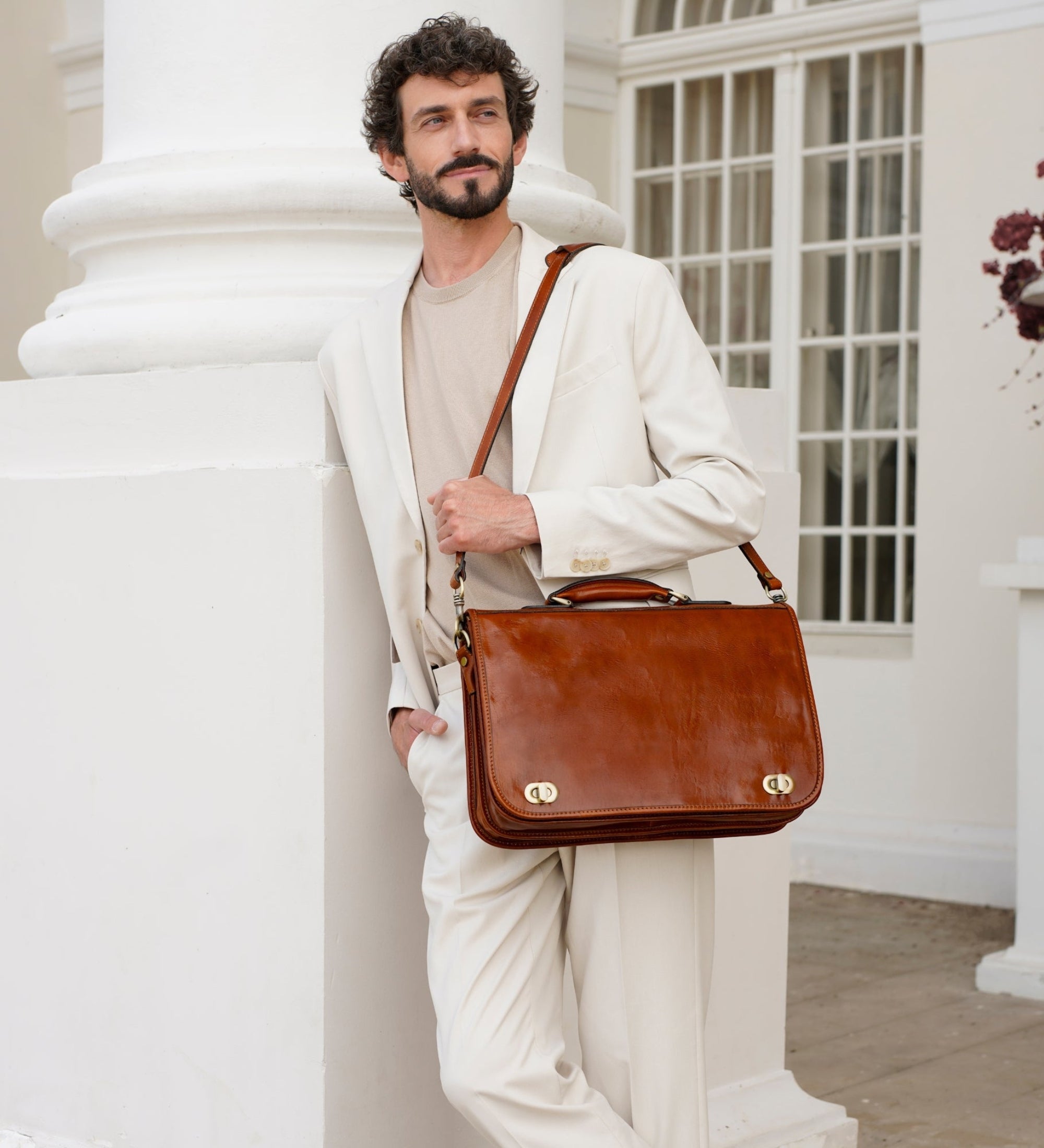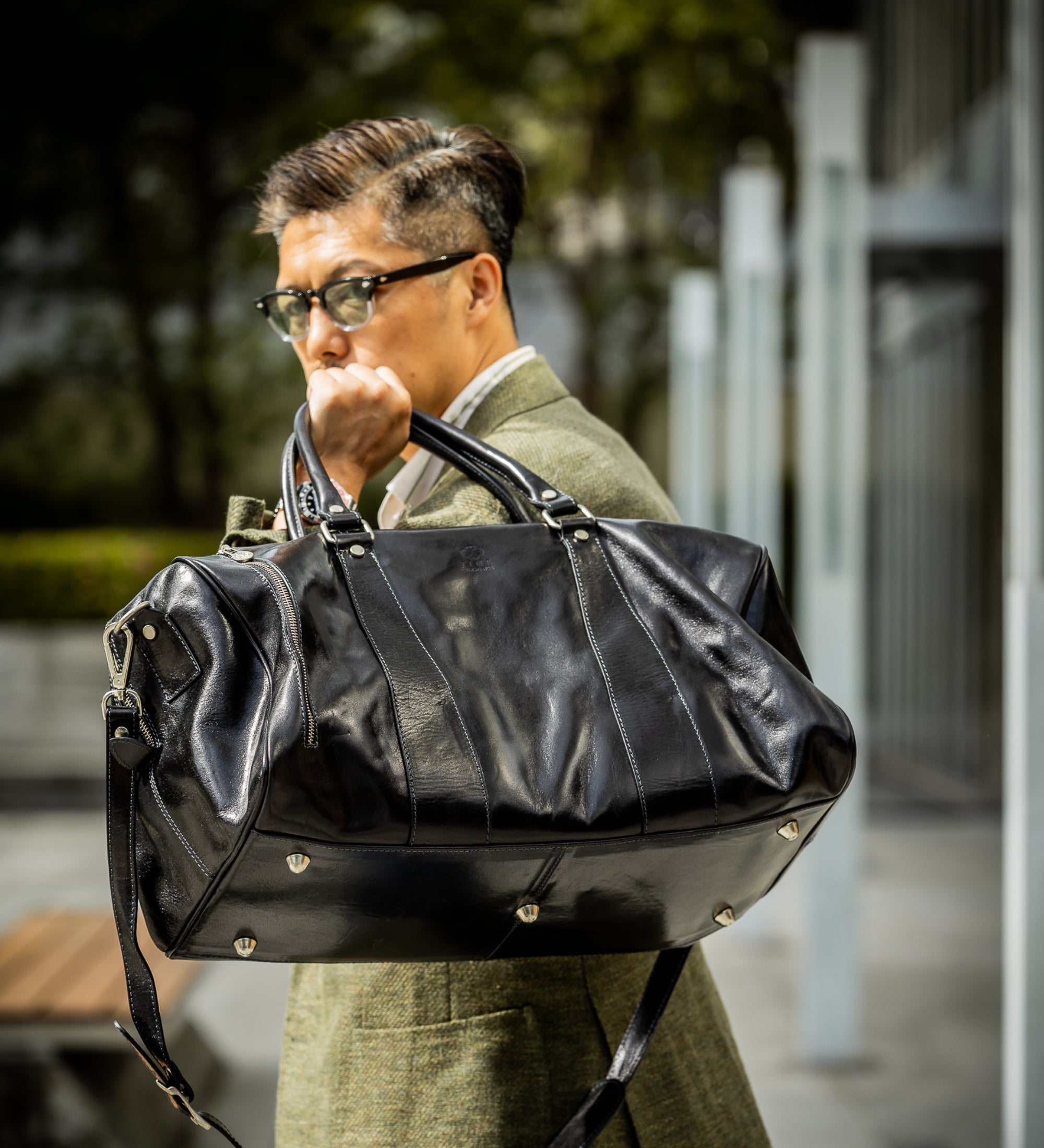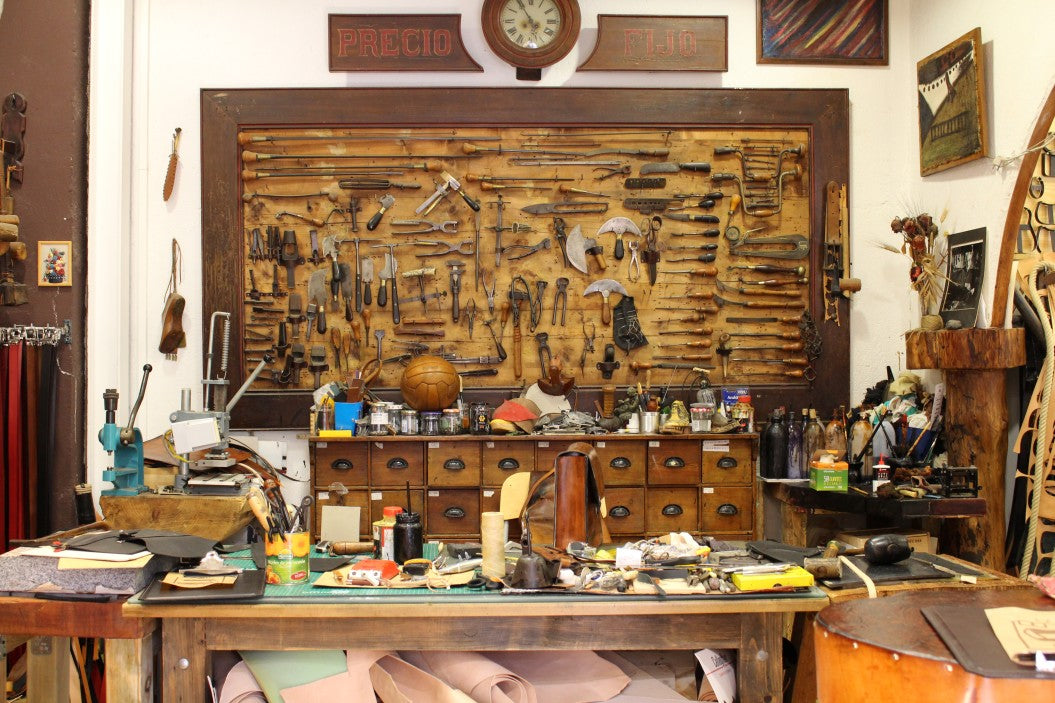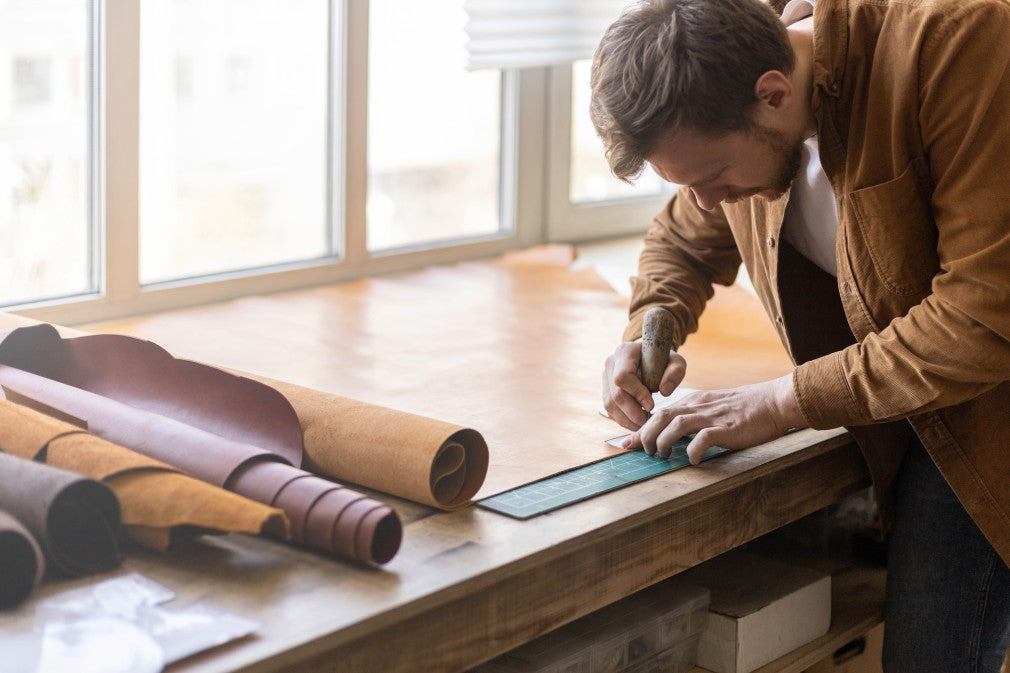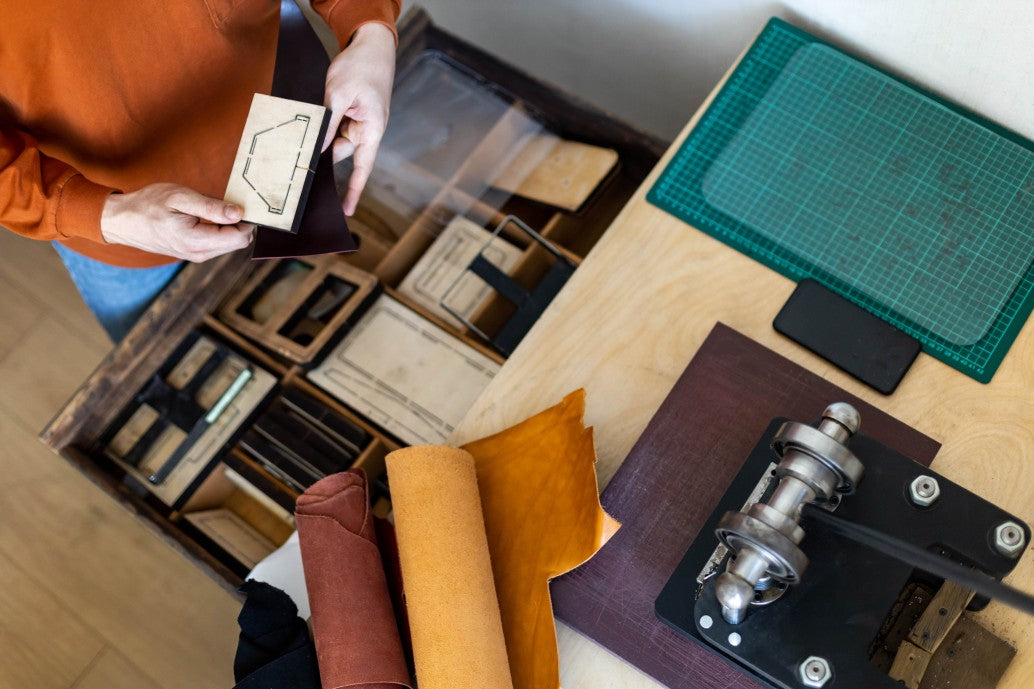
Types of Leather: All Qualities, Grades, Finishes, and Cuts
Leather is easily accessible on all big and not-so-big brands with mind boggling difference in quality and price. It casually hints that leather types are quite thick on the ground and you got to know them before you step out for shopping.
So, for simplicity’s sake, we’re analyzing them here through four parameters: Quality, Grade, Finish, and Cut. Now, let’s scan each one of them real quick!
Types of Leather - Qualities
1. Full Grain Leather
Considered as the purest type, this leather has all the grains. Only the hair from the animal are removed, and the surface isn’t sanded or buffed.
So, expect some imperfections of scars, scratches, or any marks left from the animal’s life, and that’s what exactly makes it unique and desirable. Due to least touching or processing, it is also among the toughest types.
2. Top Grain Leather
Next to full-grain leather is top grain. Here the top layer of the hide (after hair removal) undergoes some processing, taking away any impurity or imperfection. You still get the real appearance of the skin and at the same time, it is softer than the previous one and more appealing.
3. Split Grain Leather
The split-grain leather is just after the removal of full-grain. It lies from the top grain to the right above the flesh. This type is among the softest and holds many advantages.
It is usually used in colored or embossed types (we’ll discuss this later) since it can absorb dyes. However, it is vulnerable to damage.
4. Genuine Leather
The genuine leather is from any part of the animal’s hide. Unlike the above ones, which are less sanded/buffed, genuine ones are highly “corrected.” It also includes dyeing and stamping for a more premium and aesthetic appearance.
5. Bonded Leather
Lastly, we’ve bonded leather which is like a mixture of leather scrapes. All the leftover pieces of the hides are mixed with polyurethane or latex to make a single sheet of 20-90% pure product. It comes in many colors and textures and is considered the cheapest for all the obvious reasons.
Types of Leather - Grades
1. Grade One
Grade one hides are the highest graded with no imperfections, cut, or hole for disturbance in cutting and tanning. Even if there are any, they’re easily trimmable. So, the whole hide can be shipped and treated as one piece. The majority of hides are of this type.
2. Grade Two
The grade two hides can have up to four holes or cuts but in a straight line. So, the tanner can easily remove or trim them away. Also, the acceptable size of the holes is no more than 5 inches. One-fifth of the annually shipped leathers are of this grade.
3. Grade Three
The grade three hides can have more than five holes or cuts, but again, they should be in a straight line. The tanner can cut out the defected area but is left with a smaller size of the pure hide. The said defects can be above 6 inches, and the surface can have affected grains. However, only custom orders by tanners ship this type of hide.
4. Untannable
The last category is the untannable that no tanner order. They are used for other purposes other than the leather industry or cut into scraps to make fake or bonded leather.
Types of Leather - Finishes
1. Aniline Leather
Aniline leather has its natural texture as the only soluble dyes are used to dye the surface. Every cut, blemish, or patch is visibly clear, which enhances the beauty of this material. So, only high-quality leathers are used in this process due to their even and smooth surfaces.
2. Antique Leather
Consider it similar to aged grandparents because of the marks, colors, and textures it shows after aging over time. The antique look and feel is highly desirable among leather fans.
However, some manufacturers use finishes, pigments, and treatments to imitate the wear and tear of time. Anyway, these types provide a worn-out look that increases the stunning glory.
3. Degrained Leather
It is probably the smoothest after having all the grains removed and the result is a consistent and even surface with a smooth texture. However, it also makes the material prone to damage, as the softer material underneath is weak.
4. Double-Sided Leather
When the leather is treated from both ends, it is called double sided and can be used from both sides. It can either have a similar finish on both sides or a different finish on each side. Mostly sheepskin is used for this purpose. In any case, it increases the versatility of products.
5. Faux Leather
You can say faux leather is fake or artificial leather. It has around 10-15% real leather scraps combined with plastic or polyurethane. They are mixed to form a single sheet that appears and smells like genuine ones but is cheaper.
Types of Leather - Cuts
1. Whole
As the name suggests, it comprises the whole animal’s hide. So, grade one hide usually falls under this category and allows the manufacturer to use any part of the skin for the product freely.
2. Side
The side cut includes all the parts from one side, as the whole piece is cut lengthwise from the middle. Since it includes every section, it still gives the manufacturer versatility to use any section.
3. Shoulder
The shoulder (or double shoulder, which includes both sides) cut has the shoulder part that is flexible and mildly strong. It is mostly used to make tools’ handles and items that face less damage.
4. Belly
The belly cut has highly flexible leather due to the animal’s belly stretching and contraction throughout life. Its flexibility is useful for various products that are more likely stretchable (like clothes).
5. Bend
The bend cut is from the spine to either side of the belly. As it consists of the upper portion, it has very low chances of impurity or imperfection. The section also makes the finest leather for a wide range of products.
6. Butt
The butt cut is the toughest and thickest part of an animal hide, which is resistant to damage. It consists of the rear leg portion through the butt up to the spine. The piece is used to make heavy-duty items like furniture or heave belts.
FAQs
1. What is the best type of leather?
Full-grain leather is considered the best type of leather due to number of reasons. It is untreated - not sanded or buffed - and has all the grains. Also, this part has faced the harsh weather and outer world, so it is also the strongest one.
2. What are the four major types of leather?
Typically, there are four major types of leather. These include full-grain which is the purest, and top-grain which is extremely smooth, the corrected leather that is sanded or buffed and lastly, bonded leather which is mostly fake with itsy bitsy of real leather.
3. What is fake leather?
Faux or fake leather is not exactly leather but a blend of hide scrapes and polyurethane. It contains only 10-15% of real leather and blends with plastic, latex, or polyurethane to bind them and is mostly used for making cheaper material.
The Bottom Line
So, wrapping up the whole discussion, it is safe to declare that myriad leather types have swarmed the market. But the problem is not all of them might suit your needs. We hope our article about leather types will cut the clutter for you and help you to see your options clearly.


